News
Economic gains may be exacerbating homelessness in southeast Ohio
By: Theo Peck-Suzuki | Report for America
Posted on:
LOGAN, Ohio (WOUB/Report for America) — The drive out to Old Man’s Cave reveals just how much tourism has changed the Hocking Hills.
Signs on State Route 664 advertise saunas. Businesses built to attract visitors — gift shops, an ice cream store, a petting zoo — populate the road. Banners hung on old barns share the telephone numbers for local realtors, hinting at a hot real estate market.
“The annual visitors at the Hocking Hills State Park is actually more than Yellowstone National Park,” said Hocking Hills Tourism Association Executive Director Karen Raymore. “Yellowstone usually estimates between 4 and 5 million, and last estimates I’ve heard, we’re more like 6 million.”
Tourism generates vital revenue for Hocking County. The Appalachian Regional Commission classifies Hocking’s economy as “transitional,” while many other Appalachian Ohio counties are considered “at risk” or “distressed.” Raymore said tourism is the reason Hocking scores better.
But the growth happened so quickly, and with so little planning, that it had a serious unintended consequence: An explosion in real estate prices and a decline in affordable housing.
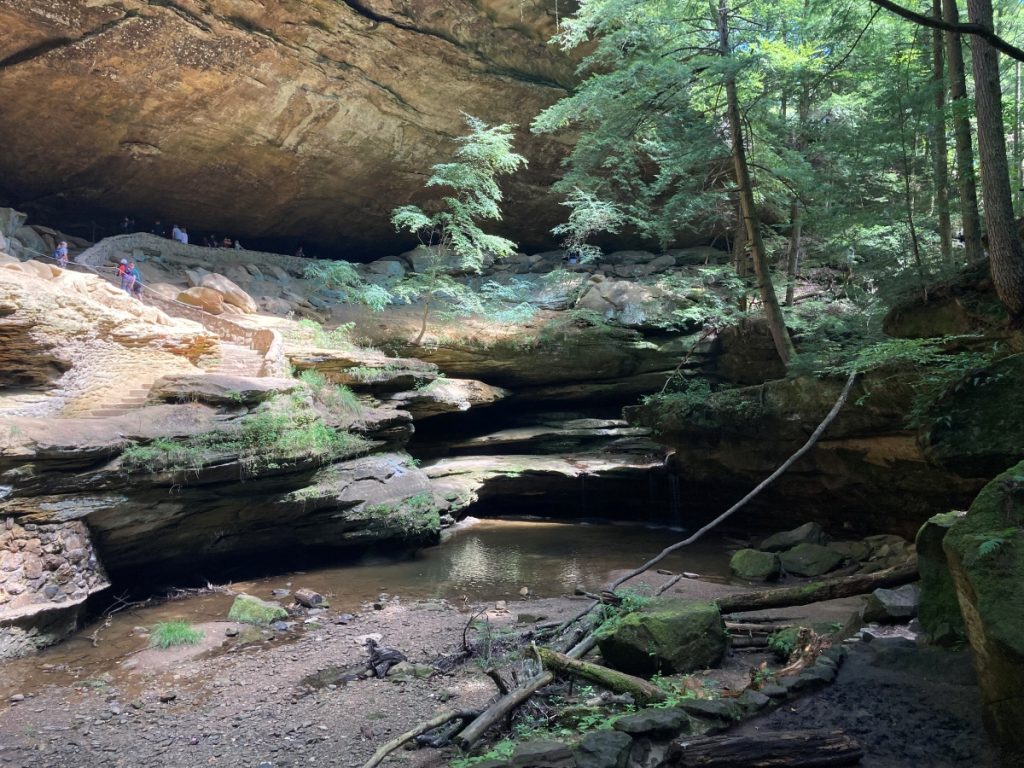
“No one anticipated it,” she added. “And so most municipalities with zoning, their zoning doesn’t address it adequately enough.”
Countywide, there are 1,556 short term rentals currently registered in Hocking County, though local officials warned the exact number can vary as properties are bought, sold, and constructed.
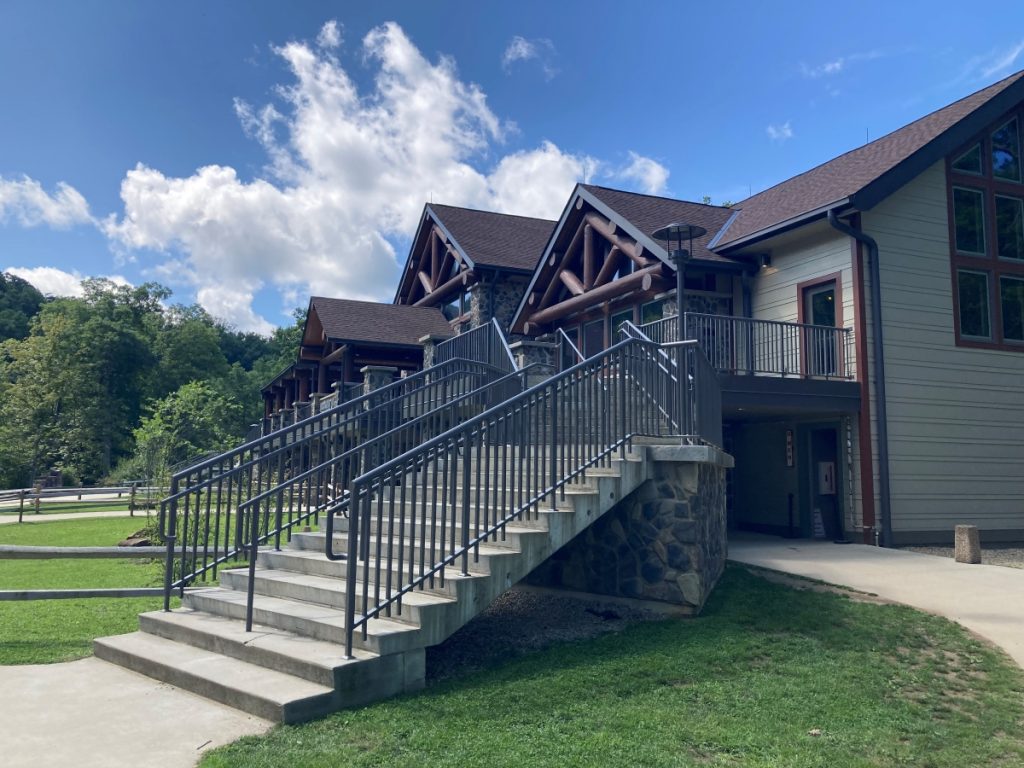
In the meantime, the loss of affordable housing is making another crisis much worse: homelessness.
A large and unseen problem of homelessness
Hocking isn’t the only county facing an extreme shortage in affordable housing. The causes appear to vary by location — in Athens County, for example, experts say Ohio University has made housing prices surge — but the trend is widespread.
Low-income residents are suffering the consequences.
“When you think about homelessness, you’re also thinking about affordable housing, or if you’re not, you ought to be, because they’re so interconnected,” said Lisa Brooks, vice president of the domestic violence shelter My Sister’s Place.
Less affordable housing means more people who can’t afford homes. Inevitably, said Brooks, some of those individuals end up homeless. To keep a roof over their head, some double up with friends or family, often in violation of a lease, or continue living with an abusive partner. Others live in their cars or set up camp in the woods.
The full scale of homelessness in the region is difficult to assess, Brooks said, because living situations are extremely fluid and many individuals try to avoid the public eye. Some are afraid children services will take their children, or have experienced harm after seeking help.
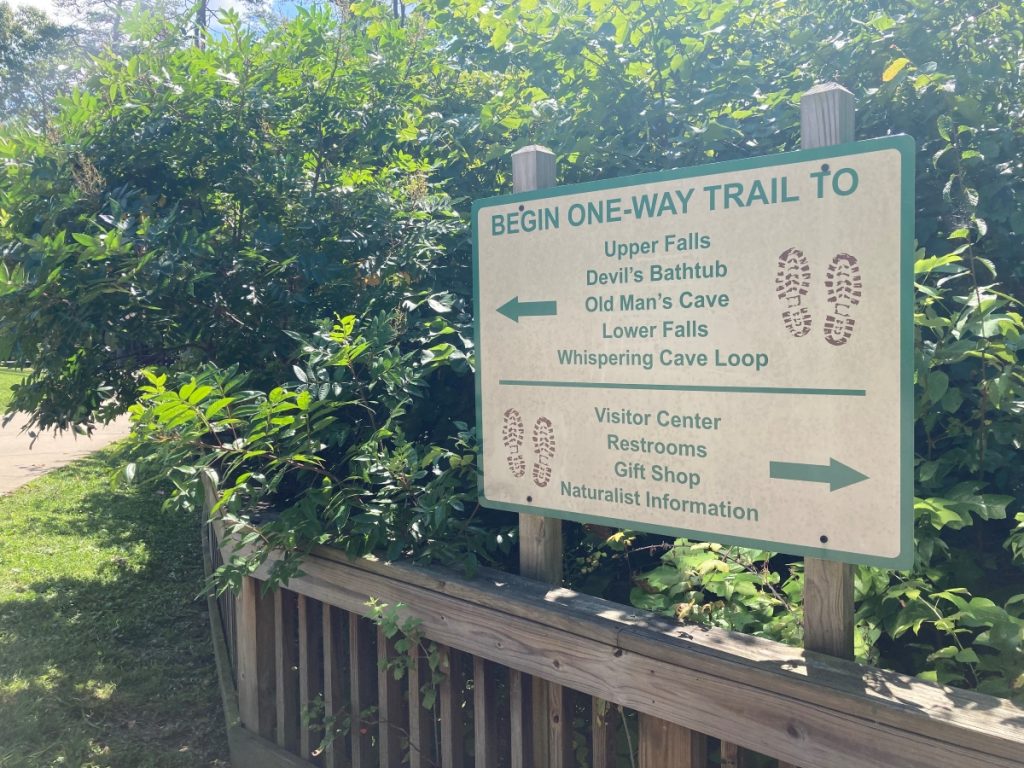
“We had an art annex there which was like our studio space, which I pretty much lived in throughout my college experience,” Brooks said. “I didn’t really have adequate transportation. I didn’t have adequate income to make all that work, and so there were a lot of times I was sleeping in my car, someone else was taking care of my baby, and I was trying to graduate college.”
Brooks did graduate and has since had a successful career at various organizations that deal with homelessness. However, she resists the idea that she pulled herself up by her own bootstraps, or could have done so if she wanted.
“For me, that wouldn’t have worked. I have some built in privileges, being a white person. I’m from this town and this community. … So I have some connections here, and some family ties here, that I was able to leverage. That had nothing to do with my bootstraps,” she said.
Shelters see rising demand with homelessness
As housing prices continue to rise, the Hocking Hills Inspire Shelter in Logan — one of the few homeless shelters in all of southeast Ohio — has seen a significant uptick in demand.
“We are a 14-bed facility. However, depending on my demographics, I’m almost always over 14. So, I can pack a mom and a couple kids into a room,” said shelter director Kay-Lynn Fulton. The shelter also has a lengthy waitlist, particularly during colder months.
The shelter teaches basic life skills such as cleaning to those who need them, which Fulton said can reduce potential tensions with a future landlord. It also closes from 10 a.m. to 3 p.m., and residents are encouraged to go out and accomplish acts of daily living — making appointments, working jobs, or taking a walk in the park with their children. In the evenings, residents reconvene for dinner, which a local donor often prepares.
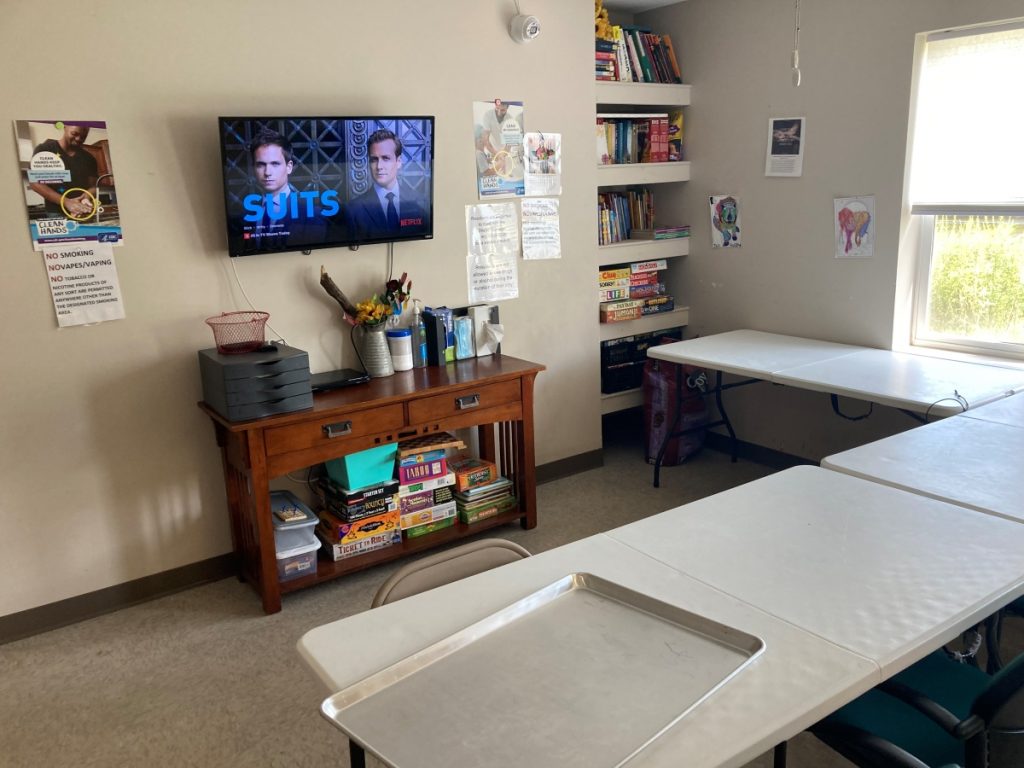
“Our goal is (to have residents housed in) 40 days, but right now, we’re averaging about 90,” Fulton said. “We’re having a hard time finding apartments, housing, for anyone in the area.”
A report from neighboring Ross County paints a similar picture. The Ross County Community Action Commission opened a temporary shelter there from January 2022 to April 2023. According to the Commission’s executive director, Julie Bolen, the shelter served 482 different people during that time. Of those, 189 started the rapid rehousing process.
The National Low Income Housing Coalition releases an annual report on housing prices across the United States. In 2022, it found an individual had to make over $14 an hour in Hocking County to afford a two-bedroom apartment, well over Ohio’s $10.10 minimum wage. The number was $15 an hour in Ross County.
One year later, those prices have risen. The coalition now estimates the hourly wages needed for a two-bedroom apartment in Hocking and Ross counties are $15 and $16, respectively. The state’s minimum wage has not changed.
Making ends meet
Low-income residents aren’t the only ones struggling to keep a roof over their heads. Shelters themselves are finding that funding and accommodation is scarce.
“It has been difficult,” said Nancy Wright, who directed the Hocking Hills Inspire Shelter before Fulton.
The shelter relies heavily on local donations and fundraisers. Its two storage closets are stocked with food and hygiene supplies local residents purchased and donated to the shelter. But those local dollars can only go so far.
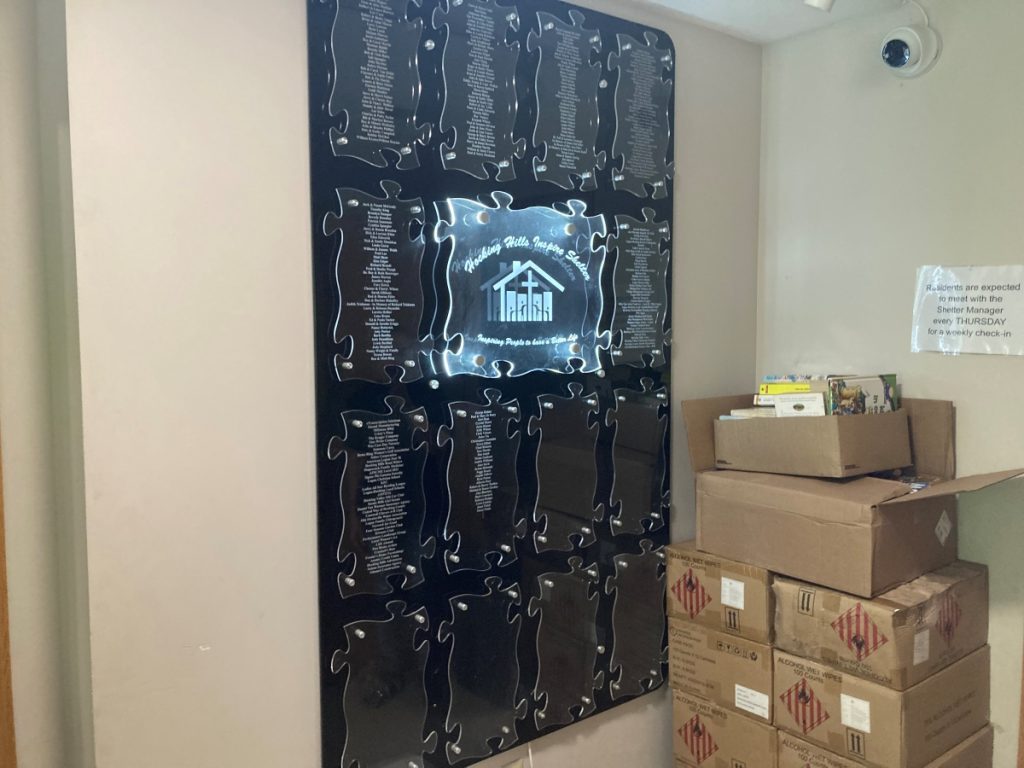
The shelter has no dedicated grant writer. Fulton said she writes the applications herself.
Wright said the shelter’s long-term finances are by no means secured. However, she maintains hope that things will work out.
“We are a faith-based facility, and we have to believe that God will provide,” Wright said.
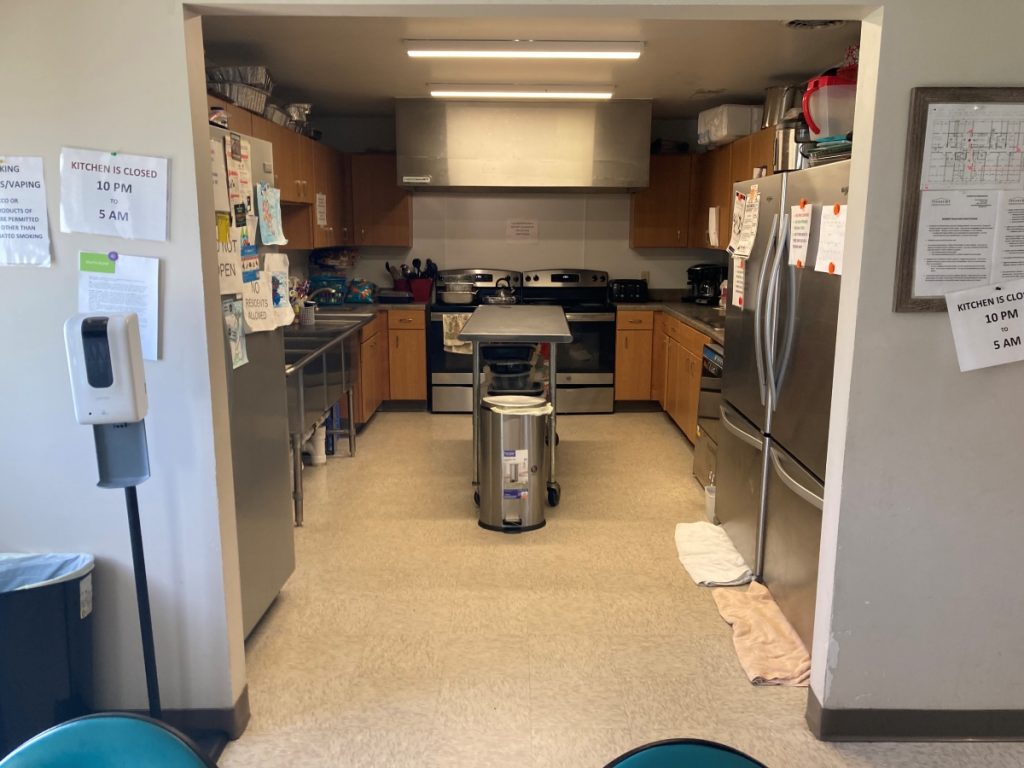
“We had to move our shelter three times because of zoning code,” Bolen said.
The Ross County shelter was always meant to be temporary. Bolen said they originally planned to operate through 2022, then acquired additional funding to stay open through the cold winter months. At that point, the need for the shelter was clear, but the cost of repeatedly moving was chewing through resources.
“We needed to regroup,” Bolen said.
Discussions with city and county officials ensued. Here, Bolen said, they had a stroke of luck: Interest in reopening the shelter was strong. They identified a building that could house not only a permanent shelter, but other services, as well.
Recently, the group had a breakthrough.
“Our county and city are providing funding for us to purchase the building,” said Bolen. “For us, that is just so exciting to be able to make that purchase.”
The new shelter will open in the winter.
Not all local governments are as enthusiastic about homeless shelters. Perry County, located just east of Hocking, has no homeless shelter whatsoever. The juvenile court judge there, Luann Cooperrider, has tried to lobby the county commissioners for support on a facility.
Currently, “the only thing that’s available — it’s sad, but it’s a little Relax Inn hotel on the edge of New Lexington where we can put folks. It’s quite expensive and you don’t have any services there as far as counseling,” Cooperrider said.
“We have presented several times to our commissioners that we believe that funding this kind of a housing facility is very appropriate under the ARPA funding,” she added. But the commissioners have not supported the measure.
Housing first
Many believe the best way to help people experiencing homelessness is to give them skills and prepare them for work before putting them in permanent housing. For many years, this was the dominant approach to homelessness in the United States.
“Well, that didn’t really work very well,” said Marcus Roth of the Coalition on Homelessness and Housing in Ohio. “What we found was that, while it might make sense intuitively — if you’re going to give somebody a place to live, they’d have to show that they’re doing their part, right? … The truth is that overcoming mental illness, overcoming addiction, is extremely difficult, even for people that have all the resources.”
Not all people experiencing homelessness have a mental illness or struggle with substance use, but it is not uncommon. Roth said individuals who are struggling with such issues have an exponentially harder time recovering when they are also struggling with housing.
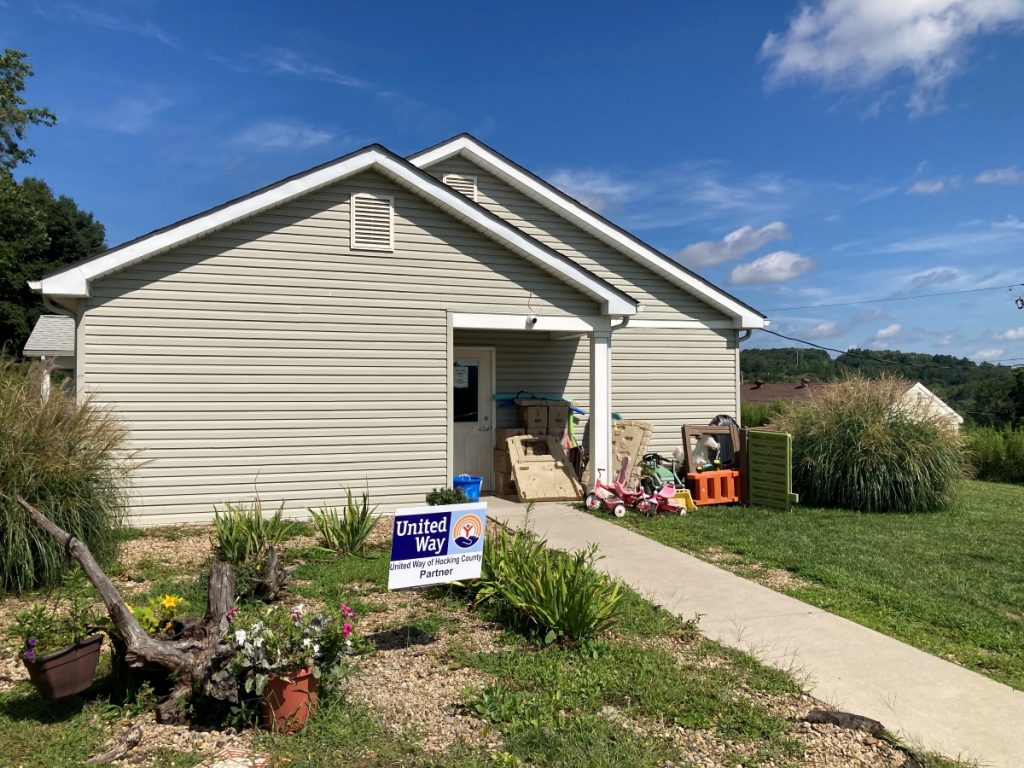
“Basically, we’re just gonna give them a house, a home, first. And we’re going to provide the services, have the services available, but not require them to use the services,” Roth explained.
As it turns out, “what you find is that people do take advantage of those services. They do stabilize at much higher levels, and the outcomes are just far, far more successful over time,” Roth said.
Lisa Brooks noted that “housing first” has not caught on everywhere.
“There’s a real, I call it the ‘bootstraps mentality,’ that people should be able to pull themselves up by their bootstraps. In Ohio, at the legislative level, a lot of our leaders believe that,” she said.
The Ohio General Assembly did include a tax credit for affordable housing in its recent biennial budget. The aim of the tax credit is to create approximately 4,000 new housing units statewide over four years.
Roth said the tax credit is an important step. However, he noted that Ohio lost 15,000 affordable units between 2021 and 2022.
“We definitely need to do a lot more in terms of expanding our efforts to create more affordable housing,” Roth said.
Roth added that despite the incentives, developers often run into a host of issues when trying to build affordable units, which can slow the process significantly.
Ultimately, however, both Roth and Brooks maintained that the ability for southeast Ohio to expand its affordable housing stock will largely determine how much homelessness exists in the region going forward.
“Everyone is ready for housing. We all need it, and we’re all ready for it,” Brooks said.

